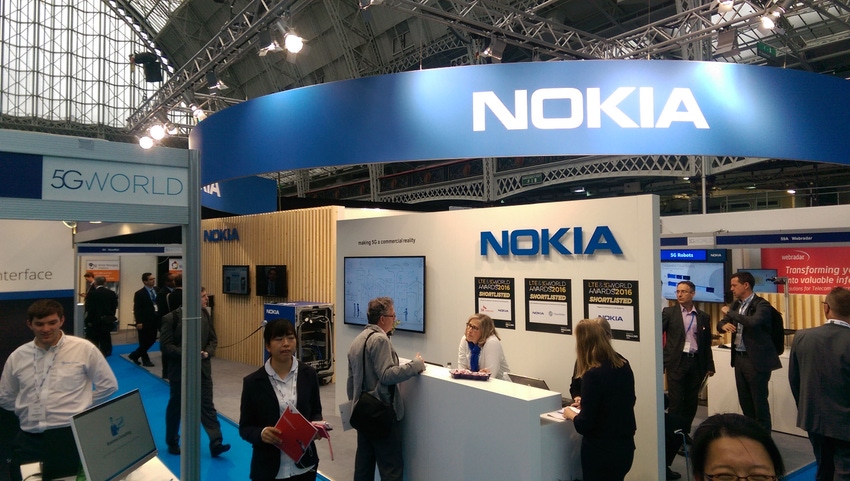If the road to 4G was a complicated one it appears things might be a little different in the build up to 5G according to Hossein Moiin, CTO of Nokia's Mobile Networks business group.
June 12, 2017

If the road to 4G was a complicated one it appears things might be a little different in the build up to 5G according to Hossein Moiin, CTO of Nokia’s Mobile Networks business group.
With anticipation for the super speed networks starting to hit euphoric levels, the small and steady incremental steps towards 5G are bringing the finishing line to within touching distance. Business cases for the technology are beginning to ramp up, and standards dangerously close to completion, surely it won’t be long until we can coo over cat videos 24/7.
“Since Barcelona (at Mobile World Congress), we’ve solidified what we promised,” said Moiin. “It’s beginning to shape up in a way technology development usually does; very steady progress, and its where it should be. Our hope is by the end of this year most of the standardization will be done. This is a hope and an expectation.”
While the confidence from Moiin is encouraging, on the eve of the 5G revolution there are still pockets of scepticism around the world. Whether it is South America, or Russia, or technophobes here in the UK, the question still remains as to whether 5G is the horse or the cart.
IoT might be one of the holy grails of the 5G promise, but, firstly, will the meagre rewards for telcos justify the relentless push for speed? And secondly, is it needed considering the advanced which are being made elsewhere? Some may argue IoT can be achieved through LTE. Another interesting question is whether this is a solution for a yet unanswered question.
“It depends on which operators you are talking about and where they are in their own market,” said Moiin. “We see huge demand and need in developed markets like North America or Japan for instance.”
In markets like North America, you have to begin to question the economics of telecommunications. It might be considered an over simplification, but there simply aren’t enough customers left. Where are you going to source new contracts? How many new services can you push on your existing customer base? Where are the new revenues going to come from in this increasingly commoditized sector?
5G is the solution to this question as large telcos look to broaden their portfolios. Whether it is more of an IT focused business models targeting enterprise, or an entertainment orientated one to deliver content, the next generation of networks open new doors to new revenues.
“Investments in LTE were hampered by the initial layout, which was very high,” said Moiin. “For 5G, it’s a different deployment model. You can roll out in one area, collect subscriptions which will then fund elsewhere. You can focus on the dense urban areas which need capacity and then move onto factories and then onto broader coverage. This gradual rollout is a different type of investment from LTE.”
The introduction of LTE saw the early adopters through to the late arrivers, as well as the continued investments today. It was the beginning of the bell curve, due to the huge sums which were needed in the initial stages.
5G, however, is based more on software and the infrastructure is already largely in place. Moiin anticipates a more steady adoption trend, which is spread more evenly through the ecosystem. The complications of the previous generation have largely been answered, though others are now presenting themselves in certain areas.
“I’m not optimistic about Europe to be honest,” said Moiin. “Europe is traditionally the leader in developing new technology, but in terms of deployment, operational structure or taking risks, these are issues which are not technical. European operators are falling behind.”
The first deployments of 5G are likely to be in North America, with Korea and Japan following with mobile use cases. Europe will continue to lag behind, with one of the reasons being the industry is not supported by the regulatory landscape.
If you compare the European market with that of the states, Moiin’s point begins to become a bit clearer. The markets are roughly the same size, but one has four operators, the other has more than 60. In one, the R&D is concentrated and consistent, allowing for economies of scale. In the other, it is fragmented, and reduced, as the operators fund expensive marketing campaigns to tackle the threat of incredibly competition.
If domestic consolidation is not the answer, then maybe pan-European consolidation should be encouraged. Create a smaller number of mega-operators with more centralized and consistent R&D plans to step-change the investments in future technology. Perhaps this needs to be lead from the top, as it would appear pan-European consolidation is an unpopular conversation for the telcos.
“Maybe the FCC is more enlightened in these matters that Europeans, even the current one,” said Moiin. “They see the virtuous cycle of investment, innovation and adoption. If you remove anything it won’t work. Europe lacks the investment in 5G for the moment.”
About the Author(s)
You May Also Like








.png?width=300&auto=webp&quality=80&disable=upscale)


_1.jpg?width=300&auto=webp&quality=80&disable=upscale)


.png?width=800&auto=webp&quality=80&disable=upscale)